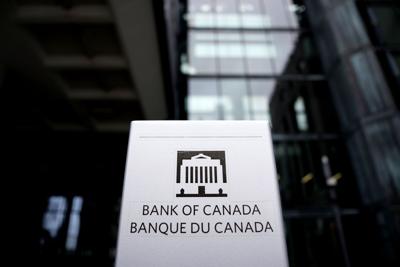Bank of Canada officials considered cutting interest rates by 25 basis points in April, but some feared it wouldÌýfuel inflation amid U.S. President Donald Trump’sÌý“erratic” tariffs,Ìýaccording to a report published by the bank Wednesday.Ìý
The summary of closed-doorÌýdeliberations comes two weeks after the bank held its key interest rate atÌý2.75 per cent following seven consecutive cuts from a peak of five per cent.
It offers a behind-the-scenes look at the close-call decision, and what policymakers expect for Canada’s economic future.Ìý
“While there were differences in views, everyone agreed there was a great deal of uncertainty and the situation could change quickly,” the report stated. “They also agreed they should be less forward-looking than usual.”Ìý
All seven members of the bank’s governing council, the report said, eventually reached a consensus.
Going forward, some economists expect the bank to resume cutting rates.Ìý
“We continue to believe that the Bank of Canada will resume its rate cutting cycle in June, with the debate potentially being about whether to cut 25 or 50 basis points,” Desjardins economist Royce Mendes wrote in a note to clients shortly after the release of Wednesday’s central bank report.
According to the report, central bankers agreed the Canadian economy ended 2024 in “good shape,” butÌýwill slow in 2025 due to tariffs, while inflation will decline in the near-term due to lower oil prices and the end of the consumer carbon tax.
In the long-run, the outcomes are less clear.Ìý
If tariffs end up being larger and permanent, they expect Canada to fall into a recession and inflation to rise above three per cent in 2026 due to higher tariff costs and supply-chain shifts.
If tariffs are short-lived, economic growth would still suffer, but the impact on inflation would be smaller, according to the bank.Ìý
“If new information pointed clearly to one side or the other of these opposing forces on inflation, governing council would be prepared to act decisively,” the report concluded.Ìý
Since the bank’s April 16 decision, Trump threatened to hike his auto tariff on Canada and then signed an executive order aiming to give U.S. automakers some relief on import tariffs.
The order, signed Tuesday afternoon, clarified overlapping tariffs won’t “stack” on top of each other while stating that manufacturers would be able to apply for rebates on tariffs paid on some auto parts.Ìý
Meanwhile, the economy is alreadyÌýshowing signs of struggle.Ìý
Policymakers discussed concerns about a recent slowdown in consumer confidence, real estate activity and business investment, the Bank of Canada’s report showed.
They also noted that the labour market is softening.Ìý
And, on Wednesday, new data showed Canada’s gross domestic product (GDP) contracted by 0.2 per cent in February, thoughÌýStatistics Canada said the economy likely grew overall in the first quarter.Ìý
“Today’s soft GDP numbers,”Ìýsaid Desjardins’ economist Royce Mendes, “suggest that the economy was already losing momentum ahead of the worst of the tariff shock to date.”Ìý
The bank’s next decision is scheduled for June 4.Ìý
“The Bank of Canada is going be reactive rather than proactive,” predicts BMO economist Benjamin Reitzes.Ìý
“Accordingly, next week’s April jobs report and the next round of GDP figures (due at the end of May) will be key for the Bank of Canada’s June meeting.”



























To join the conversation set a first and last name in your user profile.
Sign in or register for free to join the Conversation